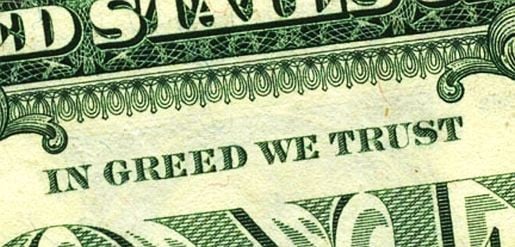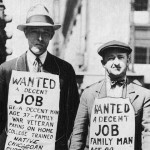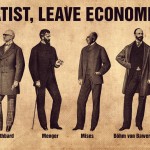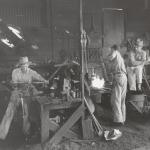
This is the last day for my notes on Mises University 2017. I wanted to watch an additional talk by Tim Terrell on product regulation but there were some streaming issues.
The first two lectures here go together quite nicely. It’s a rough outline of how libertarians tend to view the government-business relationship. The more nuanced, sophisticated expression of the libertarian opposition to government intervention isn’t that government regulation violates the right of businesses to do whatever they want, but that government intervention removes economic regulation and encourages risk, waste, and malinvestment, suppresses competitive markets, manipulates and misdirects incentives, cartelizes and centralizes industry, and protects well-connected investors, entrepreneurs, and businesses from the consequences of their actions. On more than a handful of occasions I’ve seen the libertarian view of markets described as “magical.” This remark conveys an unfamiliarity with both libertarian arguments and 300 years of economics literature. It is however not uncommon for people to describe as “magical” things they don’t understand or can’t make sense of. Even the most committed opponent of free-markets recognizes how the “unregulated” price system functions absent a central planner. A simple example: flooding in Florida drowns orange orchards. The price of oranges across the country rises to reflect the drop in supply and society is guided in changing its consumption habits and economizing its scarce resources to reflect the new reality. Entrepreneurs and investors are likewise guided in channeling their resources where prices and profits are high. All this has an effect on labor, capital equipment, land-use, their relative prices, and the structure of production. An incredible series of changes ripples throughout the system. This is what free-market regulation looks like. A commuter in California looking for his glass of morning orange juice doesn’t have to know about Florida’s weather problems to adjust his consumption and instead drink water or coffee, and it doesn’t require an interventionist government to control his consumption. The market regulates behavior by putting incentives in all the right places. This same process is at work all throughout a market economy, but in less obvious ways.
Lecture 1 – Government and Big Business by Peter Klein
Lecture 2 – Rothbard on the Progressive Era by Newman
Lecture 3 – Ten Things You Should Know About Socialism by Tom DiLorenzo
Lecture 1 – Government and Big Business by Peter Klein
Klein’s argues that certain businesses take advantage of consumers by working hand-in-hand with government.
What can we say about the role of government in the business world?
Public interest view → government intervenes in the public interest
• government is the policeman
• government defines and enforces property rights
• government tries to solve “market failures”
Private interest view → government intervenes primarily to benefit some private interest
• Some interests are easy to see → tariffs on foreign goods, subsidies, quotas, etc.
• Some are more difficult to see → health and safety and environmental rules give competitive advantages to certain firms over others as large companies with lawyers and lobbying offices can more easily adjust to rules than smaller and less-connected firms. Example: the Clean Air Act was written specifically to apply only to new construction and exempted old and established factories.
• Businesses will often favor interventions that raise their costs if they think it will raise their competitors costs more.
• “Bootlegger and Baptist Coalitions” → Two groups which argued in favor of alcohol prohibition. Religious and moral groups opposed it on moral grounds and gangsters and bootleggers favored the ban for financial reasons. Of course, only one of the two groups vocalize this. The same is true of environmental regulations and others. The owner of an old factory would favor regulations on new factories, but he can’t vocalize this publicly, so he lets environmental activists do the campaigning for him.
Perspectives on business
• Most classical liberals and libertarians have not been sympathetic to the Ayn Rand view that big business is a “persecuted minority.”
• The New Left → Gabriel Kolko, William Appleman Williams, and James Weinstein challenged the idea that government acts in the interest of the consumer to protect the public from big business.
• Murray Rothbard was highly critical of Progressive Era big business → the main interest behind the Pure Food and Drug Act was large slaughter houses in Chicago who were losing business to smaller, local butchers. They wanted to put the local butcher out of business by passing a law which disproportionately raised their operating costs.
Effects of government intervention on business
• “When buying and selling are controlled by legislation, the first things to be bought and sold are legislators.” – P.J. O’Rourke
• Business have to play the game. They’re in the system. The problem with “rent-seeking” isn’t the seeking, it’s the existence of the rent.
• Intervention promotes larger and more bureaucratic firms, less responsive to consumer wants.
• Often what we don’t like about how big business operates may not be the result of free-market forces, but of state intervention.
• Government intervention promotes big business and tend to make firms much larger than they otherwise would be. The cost of interacting with the state and complying with regulations are enormous and time consuming, and once those investments are made and skills are acquired, it’s much easier to continue doing it. Small startups struggle to compete on these terms.
• Less obvious forms of corporate subsidies → tax-payer subsidized roads for Wal-Mart and Amazon and other large retailers with vast distribution chains
Lecture 2 – Rothbard on the Progressive Era by Patrick Newman
A 600-page book is going to be published this fall by the Mises Institute which contains an unpublished manuscript and a number of essay by Murray Rothbard on the subject of the Progressive Era. The manuscript section discusses railroad interventions, the merger movement, the election of 1896, the presidency of Theodore Roosevelt, and more. The essays discuss WW1, the Federal Reserve, the labor movement, and more.
The common perception is that during the 19th century you had monopolies, unsafe working conditions, harmful products, and severe business cycles, and that at the turn of the century well-intentioned progressive reformers fought the capitalist interests and instituted important high-minded political and economic policies. Rothbard doesn’t share this view, to say the lest.
Rothbard viewed the late 19th century American economy as mostly free, and his purpose in writing the book was to show how the US moved from a reasonably laissez-faire economy to the system of interventionism, big business, special interests, inflation, and war which we have currently.
Chapters 1-3: Railroads and Mergers
Businesses tried to monopolize markets in the 19th century but failed due to market mechanisms. Railroads are one such example, and they turned to the government to begin cartelzing the industry, receiving subsidies, raising their rivals costs through safety standards, etc. The railroad industry was fiercely competitive. Railroad companies tried to form cartels and fix prices without government intervention but new competition and “cheating” sabotaged these efforts. Railroad companies themselves, and not high-minded activists, pushed for federal railroad regulation – price floors, controls, and fixing, rebate bans, and bans on pooling. The 1887 Interstate Commerce Act established a regulatory commission which by 1910 was captured by competing shipping interests who used it to block rate increases. By WW1, railroads were starved of revenue and began pushing for nationalization.
The Merger Movement occurred roughly around the turn of the century. Mergers were formed to monopolize markets, but even with high tariffs (40-50%) they failed in their efforts.
Chapters 4-6: The Collapse of Laissez-Faire Politics
How did the US turn from laissez-faire policy to the statism of the Progressive Era? A part of Rothbard’s analysis is that in the period of 1856-1896 there was a presence of ideological parties, and emotional and enthusiastic voters who were dearly concerned with economic issues like gold and silvers, tariffs and trade, government spending, etc. These voters were deeply influenced by ethno-religious factors and connected to their localities. Rothbard notes the difference in the more traditional and liturgical views of German Catholics, Irish, Italians, and Lutherans, and the more individualistic, pietistic views of Methodists and Baptists and the impulse to save yourself by saving others. Banning alcohol and private religious schools were a major goal of this bloc, and this spread to supporting tariffs to protect the country from foreign imports and banning immigration. The liturgical bloc believed that this kind of thing was paternalistic.
Newman discussed this transition at length. He covers the panic of 1893 and how wrongful blame for this cost the Cleveland Democrats the 1894 elections, which thrust the pro-silver Bryan wing into the spotlight. The major parties became very similar after this period, voter turnout and enthusiasm decreased, and fierce elections turned into Republican landslides. Newman notes that the Progressive Era was not a period of increased democracy, but a period of bureaucratic entrenchment which would protect government and corporate-capitalist, big business, political entrepreneurs, and special interests from voter wrath.
Newman quotes Paul Kleppner: “the cumulative effect of noncompetitiveness and mass demobilization … was further to insulate decision-making from organized mass opinion. That insulation was an indispensable state in the efforts of cosmopolitan elites to eliminate the party as a critical source of localist resistance to the centralizing impulses of corporate capitalism.”
The end of the laissez-faire voting bloc resulted in the following:
→ Big business: cartelization and entrenchment
→ Big government: enhancement of its own power
→ Big unions: stifle radical labor opposition
→ Big intellectuals: social planning and administration
This was the beginning of the Progressive Era.
Chapters 7-8: The Progressive Era
Theodore Roosevelt was closely connected to the “JP Morgan ambit.” Some of his first moves were to establish the Department of Commerce and Labor and the Bureau of Corporations. This was supported by the JP Morgan circle. The goal of this was cartelization. A 1904 Wall Street Journal article reads: “Nothing is more noteworthy than the fact that President Roosevelt’s recommendations in favor of government regulation of railroad rates … [and] federal control of interstate companies have met with so much favor among managers of railroad and industrial companies.” Newman notes that we should get in the habit of replacing the word “regulation” with “cartelization.”
Rothbard on Roosevelt’s 1906 Meat Inspection Act: “The large meat packers were enthusiastically in favor of the bill, designed as it was to bring the small packers under federal inspection … One advantage to imposing uniform sanitary conditions on all meatpackers is that the burden of the increased costs would fall more heavily on the smaller than on the bigger plants, thereby crippling the smaller competitors.”
Conclusion: “The Progressive Era brought the modern era of big government – disinterested voters, political entrepreneurs and other special interests, power hungry bureaucrats, and idealistic technocratic intellectuals.”
Lecture 3 – Ten Things You Should Know About Socialism by Tom DiLorenz
DiLorenzo moves very quickly and broadly through 7 points. There’s a lot of storytelling. I don’t think he was able to get to his last 3, or I missed it when I labeled them.
1. Socialism is a broad concept that’s changed over the years. It’s not just a matter of state ownership of the means of production, and this has never been the goal of American socialists. It also includes progressive taxation, the welfare state, inflation, and other anti-liberal ideas.
2. Socialism has an inglorious track record.
The USSR
In terms of natural resources and labor, the USSR was one of the wealthiest countries in the world. However, its GDP was about 5% of the US during the 1980s.
1940s Argentina
Juan’s Peron’s socialism imploded and the Argentines tried to bail themselves out with massive government spending and money printing, ending up with %1200 inflation by the 1980s.
Post-colonial India
After colonialism, India adopted Soviet-style central planning as their economic model and became one of the poorest countries in the world until Rajiv Gandhi took steps to liberalize country’s economic policy in the 1980s.
Post-colonial Africa
DiLorenzo doesn’t mention many specifics.
Venezuela
An oil-rich country that has been destroyed by explosive government spending and hyper-inflation. In 15 years, a fairly prosperous country has descended into chaos.
3. Socialism can’t be fixed
Mises’s economic calculation problem
Hayekian knowledge problem
Incentive problem
4. Democratic socialism isn’t an improvement
Hayek’s point about this is as follows: democracy is incompatible with socialism. What tends to happen is that central plans fail, and governments need dictatorial power to make the changes and adjustments necessary to keep the plan going. I think we’ve seen this sort of thing in healthcare politics.
Venezuela is an example of democratic socialism. Venezuela is discussing 2-months mandatory forced farm labor because they’re running out of food.
5. Socialism doesn’t produce equality
The wealthiest person in Venezuela is the daughter of Hugo Chavez – worth 4 billion – though she’s never had a job or ran a business. Chavez’s former financial minister, now in Europe, is worth 11 billion. Chavez’s old cronies are still living well despite the nightmare situation faced by the people.
Stalin was the wealthiest man alive. No one owned more property than him. In the USSR, all the top politicians had resort homes and secret bank accounts and lived very well.
DiLorenzo offers a couple of quotes from Mencken and Vonnegut.
6. Socialism is responsible for terrible crimes against humanity
Hayek: the worst rise to the top. Once of the reasons is the imposition of a government plan that will replace private plans. Force and violence become necessary to keep the central plan in place.
Death count:
USSR – 20 million
China – 60 million
Vietnam – 1 million
North Korea – 2 million
Cambodia – 2 million
Eastern Europe – 1 million
Latin America – 150,000
Africa – 1.7 million
Afghanistan – 1.5 million
7. Fascism is a form of socialism
Benito Mussolini wrote in his biography that fascism, like socialism, was fundamentally opposed to the needs and wants of the individual over and against the primary goals of the central state. German socialists and Soviet socialists spread these same collectivist ideas. Socialists, fascists, and communists of whatever nationality were all opposed to classical liberalism. The differences between them are all minor variations.










